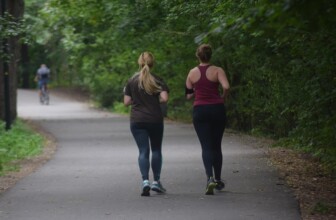Building Stronger Bones: Essential Strategies for Effective Osteoporosis Prevention
Table of Contents
- Understanding Osteoporosis
- Nutrition: The Foundation for Bone Health
- Exercise: The Key Component
- Lifestyle Factors and Bone Health
- Bone Density Testing and Monitoring
- Medications and Supplements
- Risk Factors for Osteoporosis
- Community and Support: Building Awareness and Resources
Understanding Osteoporosis
Osteoporosis is a progressive bone disease characterized by reduced bone density and strength, leading to an increased risk of fractures. It affects millions of people globally, especially postmenopausal women and older adults. Understanding its mechanisms is crucial for prevention.
The condition is often termed a “silent disease” because it develops gradually without obvious symptoms until a fracture occurs. The World Health Organization defines osteoporosis as a bone mineral density (BMD) that is 2.5 standard deviations or more below the mean for young healthy women.
As we age, bone remodeling cycles change, where old bone is removed (resorption) faster than new bone is formed (formation). This imbalance causes a net loss in bone density.
Mechanics of Bone Formation and Resorption
The bones in our body are dynamic structures that are constantly undergoing remodeling, a process involving specialized cells called osteoblasts (cells that build bones) and osteoclasts (cells that break down bone). In youth, the rate of new bone formation exceeds bone resorption. However, as one ages, particularly after the age of 30, bone resorption begins to outpace formation.
Real-Life Example: Consider Jane, a 62-year-old woman, who leads an active lifestyle but recently started experiencing back pain. After a fracture from a minor fall, she was diagnosed with osteoporosis. Her condition went unnoticed for several years, emphasizing the importance of understanding and monitoring bone health proactively.
Prevalence and Impact
According to the National Osteoporosis Foundation, approximately 54 million Americans are affected by osteoporosis and low bone mass. The condition leads to an estimated 2 million fractures annually, costing the healthcare system around $19 billion. These fractures can severely affect quality of life, resulting in pain, disability, and even increased mortality rates among the elderly population.
Identifying Risk Factors
Understanding risk factors is critical for prevention. Common factors include advanced age, female sex, family history of osteoporosis, low body weight, and certain hormonal imbalances.
Nutrition: The Foundation for Bone Health
Optimal nutrition plays a pivotal role in bone health. Nutritional deficiencies during critical periods of bone development can lead to decreased peak bone mass and increased risk of osteoporosis later in life. A balanced diet rich in specific nutrients is vital for bone density maintenance.
Calcium: The Building Block
Calcium is the primary mineral found in bones, making it essential for maintaining bone density. The recommended dietary allowance (RDA) varies with age and gender, with adults generally needing at least 1,000 mg per day.
Calcium is found in dairy products such as milk, yogurt, and cheese. For those who are lactose intolerant or prefer non-dairy sources, leafy green vegetables, fortified plant-based milk, and fish with edible bones (like sardines) are excellent alternatives.
Vitamin D: The Bone Enhancer
Vitamin D facilitates calcium absorption in the intestines and plays a role in bone remodeling. Without adequate vitamin D, bones can become thin and brittle. The RDA for adults aged 19-70 is 600 IU, increasing to 800 IU for those over 70.
Natural sources include sunlight exposure, fatty fish, egg yolks, and fortified foods such as milk and cereals. In cases where intake and sunlight exposure aren't sufficient, supplements can be considered.
Other Essential Nutrients
Beyond calcium and vitamin D, other nutrients support bone health as well. Magnesium, for example, aids in the conversion of vitamin D into its active form and is essential for calcium metabolism.
Vitamins K2 and C, zinc, and boron also contribute to bone strength. A well-rounded diet incorporating a variety of fruits, vegetables, nuts, and whole grains can provide these vital nutrients.
Exercise: The Key Component
Regular physical activity has proven benefits for maintaining bone health and preventing osteoporosis. Exercise improves bone density, enhances balance, and fosters overall wellbeing.
Types of Exercises for Bone Strength
Weight-bearing exercises, such as walking, jogging, dancing, and aerobics, stimulate bone formation. Resistance training using weights or resistance bands is also effective in building bone mass.
Balance and flexibility exercises, like yoga or tai chi, are crucial in preventing falls, thereby reducing the risk of fractures.
Recommended Guidelines
For optimal bone health, adults should aim for at least 150 minutes of moderate aerobic activity or 75 minutes of vigorous activity each week, in addition to strength training on two or more days per week.
Case Study: An example of the impact of exercise involves David, a 55-year-old diagnosed with low bone density. After starting a weight training program and daily walks, his subsequent DEXA scan showed improved bone density levels, illustrating how proactive measures can lead to better bone health outcomes.
Lifestyle Factors and Bone Health
Various lifestyle choices significantly influence bone health. Understanding these factors can empower individuals to take preventive actions.
Caffeine and Alcohol: Friends or Foes?
Studies have shown that excessive caffeine intake can interfere with calcium absorption. However, moderate consumption (up to 3 cups of coffee daily) is generally considered acceptable and unlikely to cause harm.
On the other hand, excessive alcohol consumption can lead to lower bone density due to its negative effects on calcium balance and bone remodeling. Limiting intake to one drink per day for women and two for men is recommended.
Tobacco Use: The Impact on Bones
Cigarette smoking has been linked to decreased bone density and increased fracture risk. Toxic substances in tobacco negatively affect bone formation and alter hormone levels, which can lead to osteoporosis.
Quitting smoking, therefore, is one of the most significant lifestyle changes individuals can make to improve bone health.
Bone Density Testing and Monitoring
Bone density testing is essential for identifying individuals at risk for osteoporosis. It assists in diagnosing the disease and determining treatment options.
Understanding Bone Density Tests
The most common method for measuring bone density is dual-energy X-ray absorptiometry (DEXA). This test evaluates bone mass at specific sites such as the hip and lumbar spine, comparing results to healthy young adults to calculate T-scores.
When to Get Tested
It is advisable for women over 65 and men over 70 to have regular bone density tests. Younger adults can consider screening if they have several risk factors, such as a family history of the disease or prolonged steroid use.
FAQ:
How often should I get my bone density tested? Typically, every 2 years, but your healthcare provider will recommend a plan based on your individual risk factors.
Medications and Supplements
For individuals at high risk for osteoporosis, medications and supplements may be necessary. These can help prevent bone loss and facilitate bone formation.
Pharmacological Options
Common medications include bisphosphonates, hormone therapy, and newer options like monoclonal antibodies. These medications work through various mechanisms to inhibit bone resorption or increase bone formation.
The Role of Supplements
Calcium and vitamin D supplements can help individuals meet their nutritional needs, especially if dietary intake is insufficient. It's essential to consult with a healthcare provider before starting any supplementation.
Risk Factors for Osteoporosis
Identifying and understanding the risk factors associated with osteoporosis is crucial for both prevention and treatment.
Genetic and Environmental Factors
Genetics plays a significant role in determining peak bone mass and the likelihood of developing osteoporosis. Family history of the disease increases the risk.
Age and Gender Considerations
Women have a higher osteoporosis risk post-menopause due to decreased estrogen levels, which protect bone density. Older adults of both sexes are at increased risk as bone density naturally decreases with age.
Community and Support: Building Awareness and Resources
Community support plays a vital role in osteoporosis prevention efforts. Awareness initiatives can empower individuals with knowledge about bone health.
Local and National Resources
Organizations like the National Osteoporosis Foundation provide resources and education about osteoporosis management and prevention.
Support Groups and Advocacy
Joining support groups can provide emotional support and practical advice for people dealing with osteoporosis. These communities can help share experiences, coping strategies, and resources.
Q&A Section
Q: What dietary changes should I make to improve my bone health?
A: Incorporate calcium-rich foods, ensure adequate vitamin D levels, eat colorful fruits and vegetables for antioxidants, and minimize caffeine and alcohol intake.
Q: How can I find a good exercise program?
A: Consult with a physiotherapist or a personal trainer who can design a safe and effective program tailored to your needs and abilities.
Resources
| Source | Description | Link |
|---|---|---|
| National Osteoporosis Foundation | Provides resources and information on osteoporosis prevention and management. | nof.org |
| International Osteoporosis Foundation | Global organization dedicated to promoting bone health and preventing osteoporosis. | iofbonehealth.org |
| CDC | Offers guidelines on osteoporosis screening and prevention. | cdc.gov/osteoporosis |
Conclusion
Preventing osteoporosis is a multifaceted approach that requires an understanding of nutrition, exercise, lifestyle factors, and risk assessment. Through proactive lifestyle changes and regular health monitoring, we can improve bone health and reduce the prevalence of osteoporosis.
Future research may unveil new treatment options, preventive strategies, and insights on genetics and osteoporosis susceptibility, contributing to an enhanced understanding and management of this widespread condition.
Disclaimer
The content presented in this article is for informational purposes only and should not be taken as medical advice. Always consult with a healthcare professional before making any changes to your health management or dietary practices.










